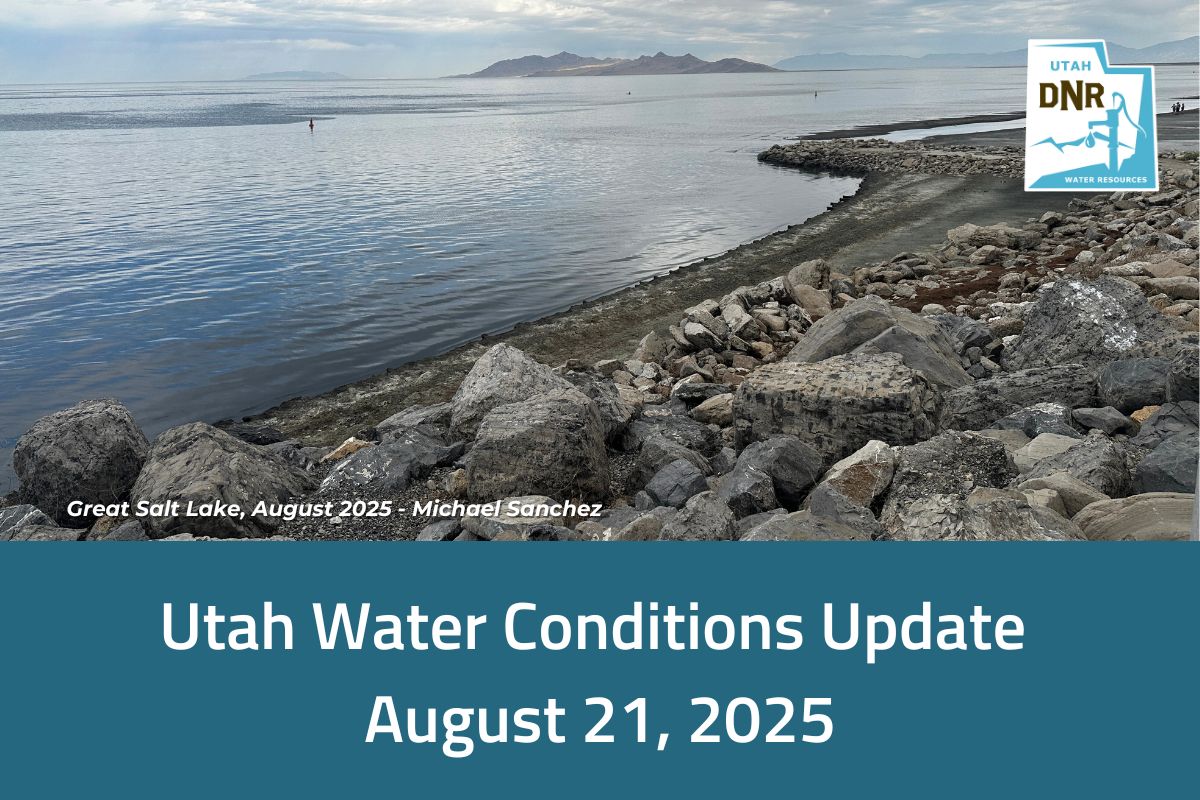SALT LAKE CITY (May 16, 2024) – As of mid-May, over half of this winter’s snow has melted. Utah’s water conditions continue to benefit from favorable weather patterns, ensuring optimal spring runoff. Short periods of warm temperatures followed by cooler weather and precipitation have helped slow snowmelt.
“A slow warmup is exactly what we need to have a safe and effective spring runoff,” Candice Hasenyager, director of the Division of Water Resources, said. “We still have a good amount of snow in the mountains, so we are hoping for a gradual snowmelt.”
According to the Natural Resources Conservation Service’s May Water Supply Report, this year’s snowpack peaked on April 2 at 18.8” snow water equivalent (SWE), or 131% of normal. As of May 1, all of Utah’s major watersheds were 90% of normal precipitation or above for the 2024 water year, with the northern Utah basins faring the best.
Streams are flowing at 89% of normal to above-normal levels. This widespread positive trend enhances the resilience of Utah’s water systems. The extra volume has rivers and streams moving very fast, which can be treacherous—especially for children and pets. The Department of Natural Resources encourages everyone enjoying the outdoors to practice Responsible Recreation.
Great Salt Lake has seen a noteworthy net increase, rising around 3 feet since October. This positive change in lake levels adds to the actions and investments from the Legislature over the past three years to preserve and protect the lake. DNR actions, such as the modification of the GSL berm, as directed in the governor’s executive order, have reduced salinity and shown signs of benefiting the brine shrimp population in the south arm of the lake.
Statewide, reservoirs are currently at an impressive 90%, showcasing solid water storage. This level is around 22% higher than normal and a drastic contrast to last year when reservoirs statewide were a little over half full. These figures reaffirm the strength and importance of our water storage and infrastructure. Many reservoirs across the state have released water ahead of spring runoff.
In Utah, about 95% of our water supply comes from snowpack. Reservoirs and storage help us preserve that water for use in dry summer months and drought years. To encourage water conservation among Utahns, the Department of Natural Resources continues to promote initiatives such as the Agricultural Optimization Program for farmers and SlowtheFlow.org for residents. These programs aim to educate and incentivize water-saving practices, ensuring Utahns become more drought-resilient and prepare for future conditions.
# # #
For more information, contact Michael Sanchez, public information officer, at 385-226-8967 or email msanchez@utah.gov.




